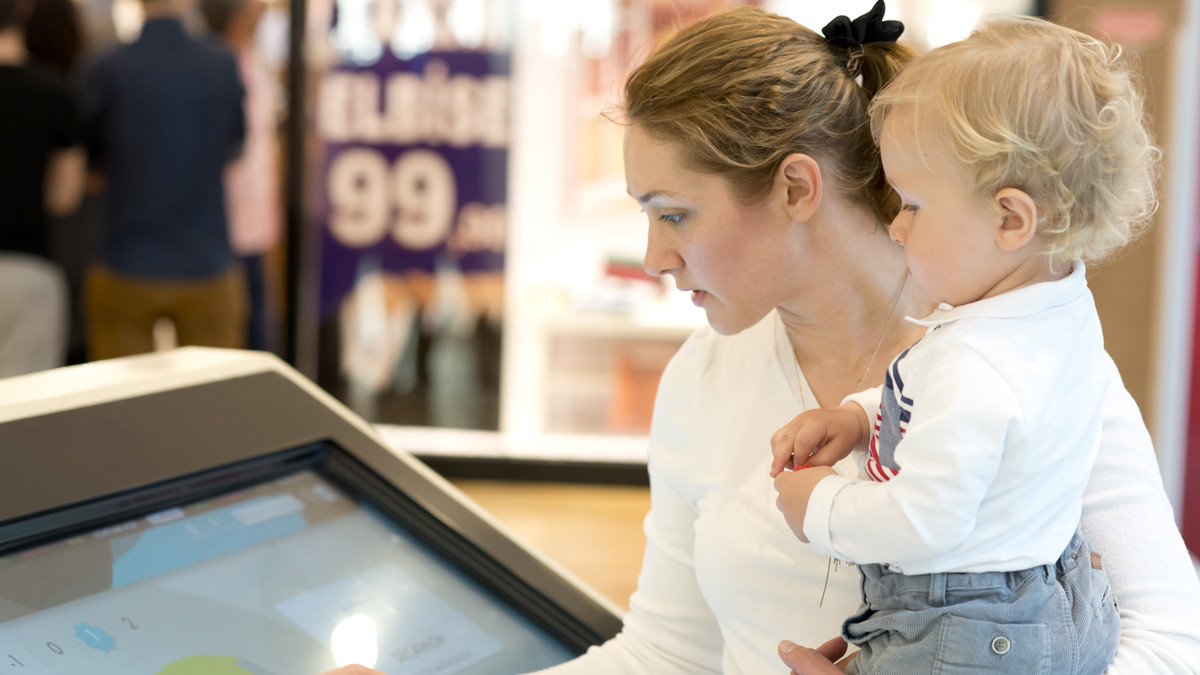According to the 2019 Kiosk Marketplace Census Report, retail kiosks — specifically those designed to carry out ordering and payment functionalities — are being adopted and implemented by retailers of all kinds across the country. “Retail order-and-pay was the most common type of kiosk operated this year, marking a significant gain over last year,” the report states.
For most, this probably doesn’t come as a surprise. In fact, a self-checkout kiosk in a retail environment may very well be one of the first self-service kiosks you ever used, or even saw. Over the course of the past decade retailers of all kinds — from the largest “big box” stores to those that are more locally owned and operated — have found innovative ways to implement self-service technologies to provide a more seamless and enjoyable experience for their customers.
Retail kiosks aren’t limited to self-checkout solutions, though. Retailers are implementing self-service solutions of all kinds — from endless-aisle kiosks to customer survey and loyalty kiosks, interactive digital signage, buy-online/pick up in store lockers, self-checkout and more. Designed with the customer in mind, these solutions are effectively helping retailers drive and improve sales. Here’s how:
Improving convenience
While some consumers enjoy browsing every aisle, shelf and rack in a store, others prefer to keep their shopping experiences short and sweet. Designed to improve the convenience factor of traditional retail stores while also driving sales, self-service solutions provide customers the option to order and pay online and pick up in-store, to browse all available inventory from an in-store endless-aisle kiosk, or to simply check out and pay for their items themselves without having to wait in line.
Increasing capacity
As retailers continue to implement more convenient self-service solutions and kiosks, they are able to subsequently improve employee effectiveness and overall order capacity without increasing overhead costs. Rather than utilizing an employee’s time to carry out every individual transaction, self-service retail kiosks allow some shoppers to check out or pick up their online orders by themselves. As a result, retailers are able to process orders and checkouts more efficiently or reposition some of their employees into more hands-on customer service and sales-oriented roles to help customers find what they need throughout the store.
Promoting awareness
While retail kiosks are designed to carry out a variety of different functions, including payment, ordering, pickup and more, they can also be used as a promotional and advertising platform to drive customers into the retailer or toward a specific product. Easily customizable, retail kiosks can feature both interactive and static digital signage to allow shoppers to observe and interact with information on both the retailer themselves and the products they offer, both inside and outside of the store. Unlike traditional signage platforms, digital signage and kiosks can be updated every day or as needed to keep the content fresh, relevant and attractive to continue capturing shoppers’ attention.
From improving convenience for shoppers to increasing store and employee capacity and promoting awareness, self-service retail solutions of all kinds are helping retailers effectively drive sales while creating a seamless and customized shopping experience for their customers.
Copyright Networld Media Group DBA Networld Alliance, LLC, Sept. 9, 2019. This article was written by Melissa Harward from Kiosk Marketplace. News Features and was legally licensed through the NewsCred publisher network. Please direct all licensing questions to legal@newscred.com.
![]()



